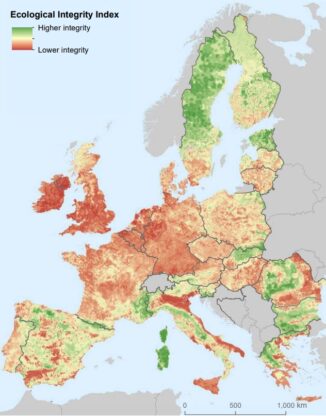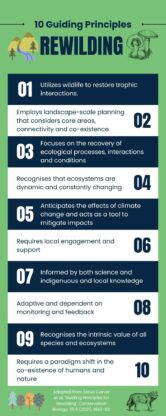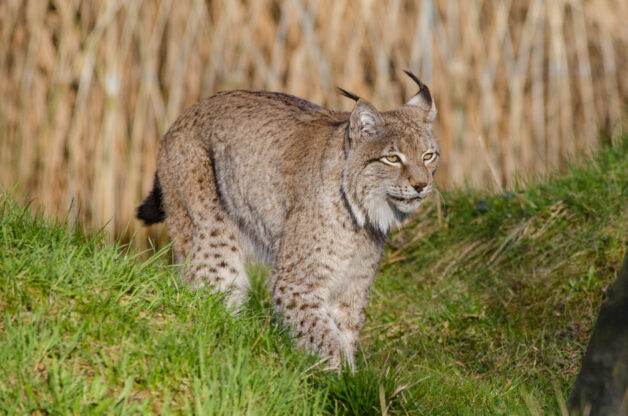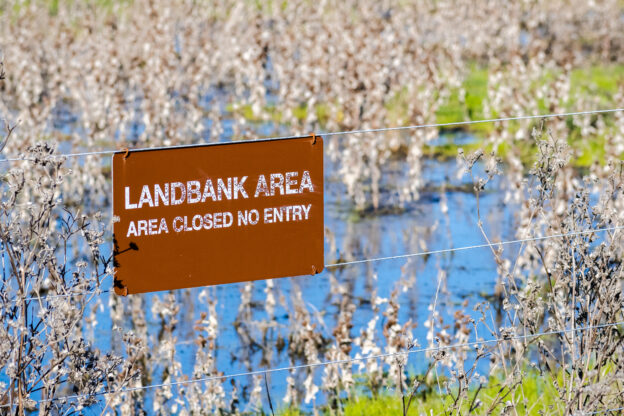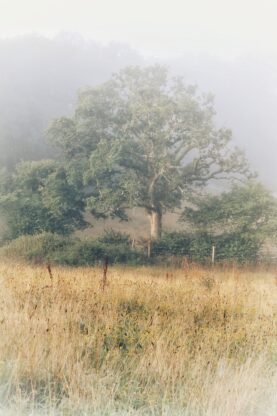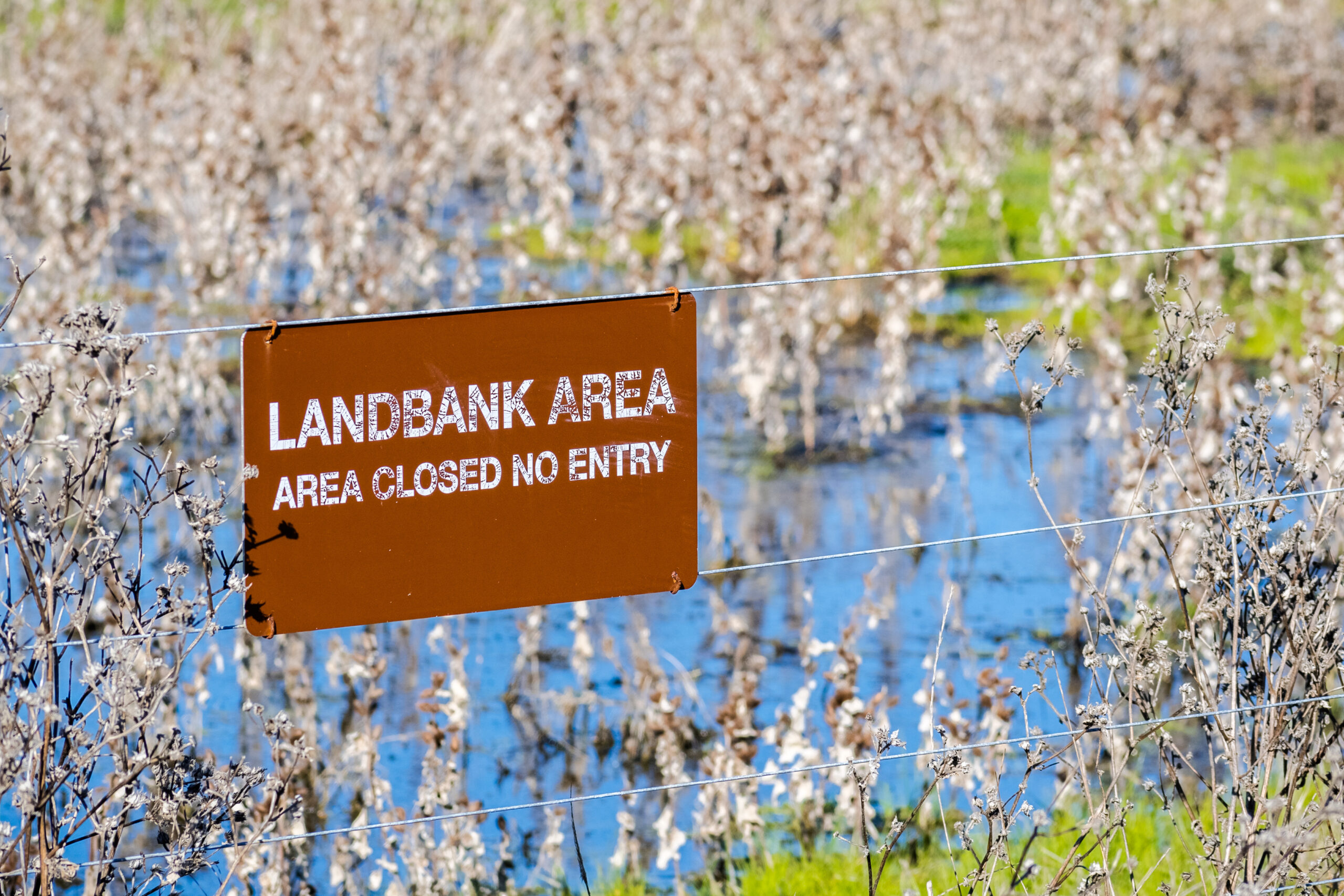
by Ciara Murphy
Dr Ciara Murphy is the Jesuit Centre for Faith and Justice Environmental Policy Advocate and the Irish Jesuit Province’s Ecology Delegate. She is also co-author of The Parish as Oasis: An Introduction to Practical Environmental Care (Dublin: Messenger Publications, 2022).
The State of Ireland’s Biodiversity
Ireland is known as the Emerald Isle for its green hills, a label which evokes lush vegetation and biodiverse landscapes. This visual representation of Ireland as “Tír glas” gives us an undeserved representation for environmental sustainability. Our green hills camouflage a largely denuded landscape bereft of complex ecosystems. The absence of a mosaic of ecosystems— including native woodland, scrubland and wetlands— is mirrored by a lack of biodiversity which rely on them for survival.
Ireland’s biodiversity crisis is not a new phenomenon. We have a long history of ecological degradation linked closely to our colonised past and more recently with the modernisation of the agricultural system and accelerated urbanisation. The 16th and 17th century’s systematic levelling of our forests for timber and grazing[1] alongside the elimination of predators including the wolf[2] are widely recognised for both their cultural and ecological transformation of the Irish countryside.
Extensive agriculture is widely associated with diminished biodiversity. The alternative is established with traditional grazing meadows, extensive hedgerows, and freshwater ecosystems. This provides habitat for an abundance of species. Populations of farmland birds can flourish on land. Plentiful salmon and trout can be found in the water. And linear wooded ecosystems enabled by the hedge network allow for connectivity between the smaller pockets of woodlands while providing for smaller animals and birds.
While utterly transformed from what was there generations before, the manmade habitats of intensive agriculture have become the new normal by which we judge our ecological health.[3] In recent decades the biodiversity which established itself alongside our agricultural systems has been again degraded by intensification of the sector. This includes increased chemical inputs and land “improvements” of draining and reseeding with grass, which removes residual marginal wilder ecosystems that provided refuges for the biodiversity that remained on our land.[4]
This decline in the state of the Irish environment is clear when reviewing the reports produced by the National Parks and Wildlife Service and the Environmental Protection Agency. Approximately 85% of protected habitats in Ireland are in “inadequate” or “bad” condition with an ongoing trend showing that only 2% of these are improving in quality. The conservation status of protected species fare little better – just over half of the species listed are in favourable status.[5] When compared to the rest of Europe, Ireland is rated as one of the worst countries for ecological integrity[6] with our diminished diversity of larger fauna and the dominance of land use dedicated to grazing further reducing the complexity and diversity of our landscape (See figure 1 below). Whatever way we look at it, the state of Ireland’s biodiversity leaves a lot to be desired. But why should we care?
In this essay, I will outline why our biodiversity is important not only for its intrinsic value but also in terms of its contribution to ecological functioning and the role it plays in our climate response. Rewilding, as a policy instrument, goes beyond conserving our remaining biodiversity, giving it the space to heal and expand. Ultimately, I will argue that rewilding is crucial to help shift our relationship with nature from one of domination and control to partnership.
The Importance of Biodiversity
While biodiversity and nature are often used interchangeably, this essay will refer predominately to biodiversity. Nature is typically taken to encapsulate plants, animals, the physical environment and other features and phenomena produced by earth systems – in essence a catch all term for ‘non-human’ elements in our environment which is quite broad and so tends to lose its meaning.[7] Biodiversity, or biological diversity, on the other hand is the term used to describe all the myriad living creatures, plants and microorganisms that exist. While still covering a vast amount, this term is quite specific and so can be more easily understood, thus ensuring clarity of communication.[8]
An ecosystem is where the physical characteristics of an area work together with the biodiversity which exist in that physical space to form a “bubble of life.”[9] The functioning of Earth as we know it, where water is filtered and cleaned, crops grow, plants are pollinated, flood waters are retained, where trees capture carbon and release oxygen, and where organic matter is recycled, ready to be incorporated into new organisms relies on this biodiversity. As it is eroded, the resilience of these ecosystems is reduced. No longer stabilised by a wide variety of different species working together, the precarious functioning of an ecosystem is less able to resist the shocks and disturbances, induced both by natural forces and human action.[10] Ecosystem functioning can also be completely transformed by removing (or introducing)[11] a “keystone” species which has a disproportionate impact on the entire system[12] or altering the species composition so that the functional groups are transformed to a point where the functioning of the ecosystem changes.[13]
The importance of the goods we receive from ecosystem services cannot be overstated. However, our connection to the natural environment we co-evolved with goes deeper than we can easily comprehend. The link between physiological and mental health benefits and biodiversity, while widely acknowledged, is poorly understood.[14] The deep connection people feel towards the natural environment, the draw to understand and appreciate the ecological principles which underpin ecosystem functioning environment also confers a value. Of course, biodiversity does not purely exist to suit our needs, there is an intrinsic value to the living world which goes beyond what we can consume.[15]
The increasing recognition of the importance of biodiversity has led to a shift within the media and among advocates to expand the term “climate crisis” to “climate and biodiversity crisis.” The prevalence of climate in our national discourse has resulted in an almost universal recognition that the climate crisis is something we need to take urgent action about. However, understanding of the biodiversity crisis lags slightly behind even though it represents a threat which is arguably of greater importance. While these crises can be considered separately, they are intimately intertwined, with similar root causes and some common solutions.[16] They also function to exacerbate the impact of each other with climate collapse, one of the leading causes of the biodiversity crisis. A diminished biodiversity also leads to less healthy ecosystems, less able to cope with the consequences of climate collapse such as drought.
How We Conserve
Recognition of the diminishing state of Ireland’s biodiversity has led to a myriad of different conservation methods and initiatives. These include programmes aimed at conserving particular types of species or habitat as well as “land-sharing” and “land-sparing” conservation programmes.
Land sharing methods consider how we might protect and enhance biodiversity in the areas which have a use that is predominately not for nature protection. Urban areas in Ireland are hostile to biodiversity, often lacking good quality green space and mature trees. While greening urban areas – through tree planting, planting native plants in unpaved areas and creating parks – can help biodiversity in urban areas to thrive, it is impossible to recreate fully functioning ecosystems. In agricultural areas, Results Based Agri-Schemes[17] and other programmes that encourage buffer zones around fields, the establishment of habitats for biodiversity (ponds, scrubland, woodlands, wetlands etc), and initiatives which encourage conditions for the protection of particular species and nutrient management are all methods that are used – with varying success – to enhance biodiversity in agricultural settings.
Land sparing involves setting substantial tracts of land aside, predominately for biodiversity and ecological function. This includes the establishment of National Parks,[18] restoration of bogs,[19] and preservation of woodland for recreational use.[20] Rewilding fits squarely within this type of conservation.
While there have been several success stories in Ireland in relation to species conservation, some of these methods are not without criticism. Conserving for particular species or habitat can have an overall deleterious impact on the overall biodiversity integrity in an area.[21] Concentrating on particular popular or more understood species can blinker the health of the ecosystem. Similarly, conservation with a particular baseline in mind, such as the bare, treeless uplands common throughout Ireland, can result in maintaining a degraded system.
In some cases, expending huge amounts of energy to manage ecosystems for a specific function or landscape (even completely prohibiting the natural succession into more mature ecosystems), may be appropriate. But it fails to appreciate the complexity and potential of natural ecosystem processes to self-govern. Heath is an example of this conundrum: this man-made ecosystem was established by deforestation and maintained historically by grazing, mowing, or some other way of removing biomass. This maintenance was required because left to its own devices, the eco-system would become woodland.[22] Conserving heath is a valuable thing to do. It is a biodiverse-rich ecosystem which has strong cultural significance. But conserving it means that we are foc its succession into woodland, which is in itself a valuable biodiverse ecosystem – and one which in Ireland is devastatingly rare. We need to think clearly: Are we overvaluing one type of ecosystem by undervaluing another? Can we get to a point where we can manage the land differently, using different processes allowing a range of different ecosystems, habitats, and species to flourish?
Rewilding – could doing less be much more?
The defining characteristic of rewilding is allowing natural processes drive the transition to ecological restoration, not managing ecosystems to obtain some predetermined result. It’s about “letting nature take care of itself.”[23] Different definitions have emerged with different authors attributing varying themes and frames around “rewilding.”[24] Even within the rewilding community there are differing opinions about which projects should be considered rewilding and what should instead be called regenerative agriculture or simply natural regeneration.
While this increased interest in an alternative form of conservation is challenging the dominance of the more traditional conservation concepts, the ambiguity around what rewilding actually is – and what it isn’t – has been a barrier to its acceptance as a valid method of restoration. To remedy this somewhat, the International Union of the Conservation of Nature – a union comprised of both government and civil society organisations – established a Rewilding Thematic Group[25] with the mandate to work towards developing an internationally recognised definition, as well as a set of universal guiding principles (see figure 2 below) for rewilding projects.[26] We can now say that:
Rewilding is the process of rebuilding, following major human disturbance, a natural ecosystem by restoring natural processes and the complete or near complete food-web at all trophic levels as a self-sustaining and resilient ecosystem using biota that would have been present had the disturbance not occurred. This will involve a paradigm shift in the relationship between humans and nature. The ultimate goal of rewilding is the restoration of functioning native ecosystems complete with fully occupied trophic levels that are nature-led across a range of landscape scales. Rewilded ecosystems should – where possible – be self-sustaining requiring no or minimum-intervention management (i.e. natura naturans or “nature doing what nature does”), recognising that ecosystems are dynamic and not static.[27]
While this definition may seem fairly straightforward, there are many potential pitfalls on the rewilding journey. There is much that must be understood and nothing that can be precisely discerned in the abstract. Questions include: What plants and animals would have been present had human disturbance not occurred? What was the complex functioning of the ecological processes we are trying to restore? How do we logistically approach that task – considering the land available and the potential reintroduction of species (each – large herbivors or omnivores or predators – requiring its own sensitivities)? Rewilding is a process. Different projects may follow some of the same principles, but depending on the stage of the journey, some may be closer to their ultimate goal of a fully self-regulating system than others. Depending on the constraining factors around the site, some projects may never realistically satisfy the definition of rewilding, potentially requiring fresh thinking about how to categorise and integrate such projects in wider ecological restorations.
Using this definition and these guiding principles, we can examine two different rewilding projects in the UK and Ireland; Knepp estate in West Sussex[28] and Beara Rainforest in West Cork.[29] Both people leading the respective projects have written extensively to document their journey and to increase the general awareness of rewilding, biodiversity and ecological function.[30] In both cases, there is an obstacle to full rewilding since they cannot reintroduce major predators. This means that while the areas are incredibly biodiverse, they are undoubtedly missing some trophic levels.[31] Working from two very different starting points, their stories show how the concepts of rewilding can be implemented in different ecosystems. The processes are different; the goal is the same.
The rewilding process in Knepp highlights how the order of different human interventions can lead to vastly differing landscapes and ultimately, the generation of a patchwork of habitats in the ecosystem. Reintroduction of large herbivores and removal of human-induced disturbance, like ploughing, mowing, herbicide and pesticide spraying, was the predominant method used for ecological recovery in this once intensively-farmed land. The investment required for fencing, seeding, and buying animals proved to be prohibitive in some sections of the project area. Their solution was essentially land abandonment of certain fields – allowing natural regeneration of scrub and saplings to re-emerge. This reordering of processes resulted in extraordinarily biodiverse areas which thrived in completely different ways from the areas where grazers were introduced immediately.
In Beara, the initial conservation efforts included removing invasive plants along with fencing to exclude grazers, which were slowing killing the rainforest, and removing understory plants and saplings. This strategy allowed the plant and soil life time to recover, creating habitats for birds, insects, and other forest creatures. Here there was less focused on appropriate disturbance from grazers and omnivores (which some might consider an unnatural process in itself, albeit one that is much less destructive than over-grazing). As the rewilding process evolved, domestic cattle were reintroduced for winter grazing.[32] This mimicked the natural ecological function of large animals that would historically have been present in Ireland. However, without the presence of a top predator – in this case the wolf or the lynx – which have been extinct from Ireland for several hundred years, a certain level of human intervention will always be necessary to ensure the numbers of grazers do not exceed the carrying capacity of the forest. In the Knepp estate their solution to this is to cull the grazers periodically and sell the meat as an additional income stream. This ultimately means that the land is not self-sustaining, as it requires extraction of animals from the system for it to remain in balance.
The Complicated Reality of Rewilding
Wisdom is required to harmonise the regeneration of a particular piece of land with ecological sensitivity while recognising political realities. Guidelines are just that. As long as people are unwilling to countenance the return of some creatures we have made extinct on the island, workarounds will be required. Were rewilding to be embraced as a conservation method, and implemented on larger patches of land, the reintroduction of such species might be viable. That would enable the restoration of important ecological functions and reduce the need for such compromises. How are we to address these complications, which go beyond ecological process and express themselves in the political and social realm?
In 2019 when tabling a motion on forestry policy, Eamon Ryan, leader of the Green Party, expressed his support for bringing wolves back to Ireland.[33] This suggestion was roundly met with derision, with many dismissing the idea as unworkable.[34] Reintroducing top predators, such as wolves, and other slightly contentious animals including the wild boar into Ireland would be a boon for rewilding. While much work can be done up to this point – without the reintroduction of members of all trophic levels – the potential benefits would never be fully realised. There would remain gaps in the ecological functioning. A national discussion around the real possibility and potential of reintroducing absent species will need to take place, acknowledging the factors around resistance, including potential risks to farming, human safety, and Ireland’s carrying capacity for such animals. However, taking a look around Europe, where wolves are slowly naturally increasing their range, we can learn lessons about how we can safely reintegrate wolves back into our society.
Resistance to rewilding stretches beyond reluctance to welcome wolves back in to the Irish faunal fold. The majority of Irish lands are currently under agricultural use. For rewilding to be a widespread conservation tool in Ireland there will unquestionably be competition between agriculture and nature for land use. Generating the required community buy-in, as well as finding the appropriate land use balance between rewilding, primarily for biodiversity and ecosystem functioning, and agricultural or cultural use will need to be achieved. A guiding principle of rewilding (see figure 1 above) specifically states that local support is required – ensuring overall benefits for local communities. Early and sustained engagement will be vital.
Rewilding, while ecologically sound, has unfortunate but inescapable connotations with the idea of wilderness and the racist, misanthropic undertones which go with that.[35] The preservation of wilderness, or pristine areas, through national parks, particularly in the US are considered to be among the first recognised conservation efforts. However, many argue that these parks are racist, classist artificial constructs, invented by elites in conjunction with corporate power.[36] To create the beautiful wilderness, the indigenous people who called that environment home were removed. This is what happened with the establishment of the first national park in America, Yellowstone[37] and is unfortunately a practice continuing to this day, especially on the African continent.[38]
It is important, however, to distinguish clearly the differences between ‘wilderness’ and ‘rewilding’. Rewilding appreciates and respects the potential of natural ecosystem processes to restore and rejuvenate ecosystems, which can be contrasted with the idea of a wilderness that humans need to be excluded from, to conserve what is there. The exclusion of humans is premised on the idea that our relationship with the natural environment is inherently destructive. While this can be the case it is not inevitable. Wilderness imagines that we are apart from nature rather than embedded within it. In rewilding, we work to change this relationship to a more positive one, where we respect the existence and functioning of biodiversity and ecosystems. Changing this relationship and finding a balance in terms of land suitable for rewilding, and the human interventions required, will vary from site to site. Rewilding in already established national parks, which would be the best hope of recreating small patches of self-sustaining ecosystems, will look very different to a large land owner applying the rewilding principles to their agricultural land.
This problematic relationship between colonial wilderness and rewilding is well understood; the 10 guiding principles actively functions to guide the practice away from this troubling convergence, towards a more holistic and socially just relationship between ecosystem functioning and humans. This active redirection is the most important differentiator and goes some way to assuage the fears of those who are opposed to this concept. Rewilding, like all serious environmentalism, involves humans too.
Conclusion
Rewilding offers huge potential where we can not only conserve what biodiversity we have, but restore what is missing. The process of allowing rewilding to happen is also a process of shifting our relationship with nature from dominion to partner. While there are few rewilding projects in Ireland, the discussion around why we should take this leap of faith in biodiversity’s ability to heal itself is gathering pace.[39] We must recognise our reliance on biodiversity and ecological functioning. When we do, what appears to be “radical” action to turn the tide on its destruction becomes entirely sensible.
To download a pdf of this essay click here


